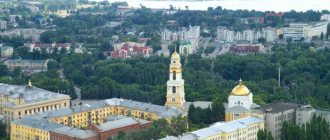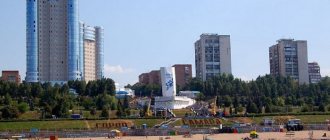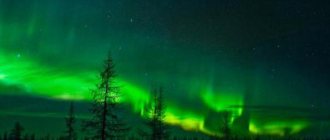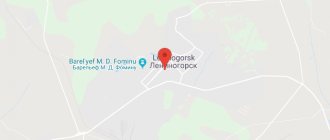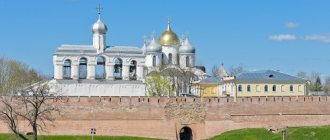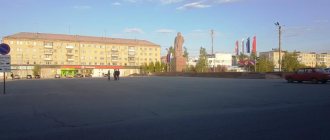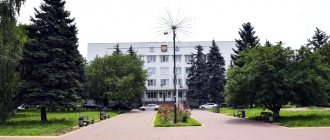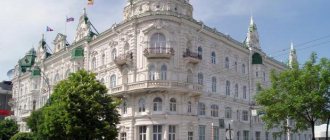Anapa
, a resort city in Russia, the administrative center of the municipal formation "resort city of Anapa" of the Krasnodar Territory, within the Novorossiysk diocese. Located in the southwestern part of the Krasnodar Territory, on the Black Sea coast, on the high northeastern shore of Anapa Bay, at the junction of the foothills of the Greater Caucasus and the steppes of the Taman Peninsula, 160 km west of Krasnodar, 52 km northwest of Novorossiysk . The city is a major transport hub with an airport, railway, sea and bus stations, and a developed network of highways. Population - 70,453 people (2015)
- On the map: Yandex.Map, Google map
The history of Anapa goes back about 8 thousand years. Around the modern city, burial grounds and traces of nomadic settlements have been found, as well as the dwellings of cattle breeders and farmers who mastered ceramics and bronze.
The first name of Anapa is Sindika
or Sind Harbor, it is named after the Sind tribe who lived here in the 1st millennium BC. The history of Anapa is associated with wars and the constant transfer of territory from hand to hand. During excavations, spears and swords are constantly found. The Sinds were constantly attacked by the Scythians, who took prisoners and imposed tribute on the people. Sometimes the inhabitants of ancient Anapa managed to fight back.
In the 5th century BC. Sindica, which had already acquired the foundations of the state, came under the influence of the Bosporan kingdom. By that time, the influence of the Greeks was very noticeable; on local silver coins, “Sindon” was written in Greek. The territory and people of that time were ruled by Sindh kings or chiefs.
In the 4th century. BC. BC, the Greeks came to Sindica, and the local residents developed friendly relations with the colonists. Greek trading posts appeared on the territory of modern Anapa.
Gorgippia
In the 4th century. BC. present-day Anapa became part of the Bosporan kingdom and was named Gorgippia
. The Gorgippia Museum, located in the open air in the city of Anapa, vividly reminds us of that period in the life of the city. On an area of about 2 hectares, you can see the foundations and basements of ancient houses, a fortress wall, and cobbled streets. Archaeological finds are also exhibited here: tombstones, sarcophagi, columns, and pediments of the temple.
The name of the city was given by the name of the ruler Gorgippus. Under his leadership, the city grew to 45 hectares, sanctuaries and monumental buildings appeared in it. The history of Anapa experienced one of the best periods: crafts, fishing, agriculture, trade, and blacksmithing developed.
However, the heyday ended with the crisis of the Bosporan kingdom in the 2nd century. BC. During this period, Gorgippia was peacefully transferred to the king of the Pontic kingdom, Mithridates VI Eupator Perisad V, the king of the fading kingdom of the Bosporus. Until the 1st century BC, the city flourished thanks to the soft policies of the new ruler. But the outbreak of war with the growing power of Rome had a bad effect on the territory. People in panic buried treasures that were found during excavations in the 19th century.
In 63 BC. the city was almost completely destroyed by an eight-magnitude earthquake and fire. The exit from the Pontic kingdom allowed Gorgippia to restore its position after some time.
For more than a century, local residents tried to rebuild the city, but in the 370s it was finally destroyed by the Huns.
Anapa - Genoese trading post Mapa
Until the 13th century, the history of Anapa was a rather difficult time. The previously prosperous city became a passageway for many peoples and tribes: Bulgarians, Huns, Turkots, Kasogs, Khazars, Zikhs, Adygs. All of them developed the land in different ways; the 11th-12th centuries saw the flourishing of viticulture and grain growing.
A completely new stage began in the 13th century, as the Genoese, Italian colonists, came to the Black Sea. On the site of the destroyed Gorgippia, where the Circassians now lived, a colony or trading post of Mapa
(aka Anapa). It was here that traders came to exchange goods with local residents. This is how exquisite glass items, jewelry, and expensive fabrics came to the city. They were exchanged for timber, wax, furs, and bread.
The history of Anapa during this period is increasingly associated with the name Mapa; it is under this name that powerful Genoese fortifications appear on maps of the 14th century, including the Catalan and Visconti maps dating back to 1318.
The Mapa Factory became a large fortification, where weapons, precious stones, spices, fabrics and jewelry were traded, and agricultural products were massively exported. But the main source of income for merchants was the slave trade. The Genoese fortress of Anapa (Mapa) established trade relations not only with Europe, but also with Asia. The city was very rich, so it was often attacked. So, in 1395 the suburbs were destroyed by Tamerlane. However, until 1475, the Genoese retained power over Mapa, until it was captured by the Ottoman Sultan Muhammad II. As part of the Ottoman Empire, the settlement received its modern name - Anapa.
Anapa Fortress - part of the Ottoman Empire
For three centuries, while Anapa was under Turkish rule, the city was exclusively a fortress and a center of the slave trade.
Since 1475, the history of Anapa, like most of the Genoese colonies on the Black Sea, has been associated with the Ottoman Empire. But the local population, who at that time were Circassians, killed the abandoned garrison and recaptured the city. In 1479, Muhammad II equipped a military expedition. This time the city was finally recaptured, and its garrison was strongly fortified. In 1481 the famous Anapa fortress was built. The Turks greatly strengthened it with the help of French engineers while preparing for war with Russia.
The Anapa fortress became one of the most powerful on the Black Sea and was part of the “Caucasian Line” chain of fortifications, located on the Kuban River. During the Russian-Turkish wars, repeated Russian campaigns against Anapa were undertaken in 1788, 1790, 1791, 1807, 1809, 1828. As a result, the Turks were unable to hold the Anapa fortress and in 1829, according to the Treaty of Adrianople, they handed it over to Russia.
Anapa is a resort city in Russia
Since 1829, Anapa has been part of the Russian Empire. Initially, it served as a fortress, an outpost on the southern outskirts.
On December 15, 1846, by decree of the Russian Emperor Nicholas I, the Anapa fortress received the status of a port city (it was lost in 1860 and restored in 1866), he also ordered the destruction of all military fortifications, leaving only the eastern gate, which can be seen today, only in memory of the valor of the Russian army .
In May 1855, Russian troops had to leave Anapa, but a year later, on June 10, 1856, Anapa was liberated from Turkish troops. In the second half of the 19th century, Anapa and the surrounding lands were populated by residents of Russian and Ukrainian provinces, as well as Greeks, Germans, Tatars and Armenians. The main occupation of the townspeople was farming on lands rented from residents of surrounding villages. Fishing brought some income. A major role in the development of Anapa lands was played by the head of the Black Sea District, D.V. Pilenko. Under him, two churches were erected, new settlers were invited through newspapers, and they were even given lifts. The development of Anapa took place according to his personal projects.
Another person who played a huge role in the creation of the Anapa resort was Vladimir Adolfovich Budzinsky. In 1866, with his light hand, the development of the city as a resort began. He created the first sanatorium in Anapa, which was inaugurated on July 21, 1900. He built a boarding house in 1902 and the first children's sanatorium "Bimlyuk" in 1909. The period from 1900 to 1917 was a period of rapid development of Anapa as a resort; sanatoriums continued to be built, and the city itself became more beautiful. In the Malaya Bay area a beautiful park was laid out, a kursaal was built where a brass band played every day, a library and even a cinema - the Saturn illusion. There was a post office, a telegraph, and a telephone network that was quite developed at that time.
After the revolution of 1917, Anapa was given the status of a resort of national importance. In 1918, sanatoriums were nationalized. In the first years of Soviet power, tens of thousands of children were brought to Anapa on vacation. In the 1930s, the task was set to make Anapa an exemplary children's resort. During these years, new sanatoriums and health resorts for children began to open. Before the start of the Great Patriotic War, 10 pioneer camps and 14 sanatoriums operated here.
In 1942, Anapa was occupied by the Nazi invaders, and was under occupation for a whole year. After the war, Anapa developed in several directions. This is an agricultural area with traditions of viticulture and winemaking, livestock breeding complexes and processing industry, and it is also a resort town where up to 600 thousand children vacationed annually.
By presidential decree No. 1954 of September 22, 1994, Anapa was given the status of a Federal resort region intended for recreation and treatment of children, adolescents and parents with children.
In May 2011, by decree of the Russian President, Anapa was awarded the title “City of Military Glory”.
General information and history of Anapa
Anapa...Who doesn’t know Anapa? Why, we’ve heard, we know, we’ve been, and we even love it! We have loved you since our earliest barefoot childhood,” you will say, and you will be absolutely right. The first acquaintance with the sea, the first bright childhood memories, a joint family vacation as a symbol of a real friendly family, sandboxes, Easter cakes, shell patterns on the shore... And so, when you grew up and started a family yourself, the first place you take your little children is - she is kind old Anapa, who always warmly welcomes all guests.
Anapa beach
Why is Anapa so wonderful? Why has she been attracting people for many centuries? What attracts thousands and thousands of people who are so eager to return to this city again? Of course, these are the wonderful sandy beaches of the Anapa coast, beautiful natural forests and man-made parks, the healing sea air of the coast, unique mineral springs, and the special geographical location of the city.
To more accurately characterize Anapa as a city or town, let’s say just three words. Three keywords that completely define local specifics, create an atmosphere, influence the character, type of activity and occupation of its residents, and determine Anapa’s place in the ranking of coastal cities. So, Anapa is a children's seaside resort!
In the southwest of the Black Sea coast of Russia, where the spurs of the Great Caucasus Mountains connect with the Taman Peninsula, there is an ancient beautiful city called Anapa. In those places, the Caucasus mountains are no longer so steep and high, and therefore sea air masses mix with the sultry air of the Taman steppes. There is no high, humid, suffocating heat so characteristic of the rest of the Caucasus coast. The air is drier - and therefore more healing. The summer heat in these parts is not as fierce as it can be in the southern regions, because the sea softens it with its cool, beneficial breezes.
The sea here is shallow, the famous sandy beaches are vast and cozy, the beautiful bay attracts with its convenient location. If we look at the numbers, they are impressive: the length of Anapa beaches is more than 40 km of sandy beaches and more than 10 km of pebble beaches! It is thanks to its special location on the map, the presence of sun, mountains and sea, that Anapa is one of the top three resort cities in Russia. Every year, almost 4 million tourists come to these regions to relax, improve their health, swim in the sea, sunbathe, visit numerous attractions, drink healing mineral waters from springs, and replenish their body’s supply of vitamins by tasting southern fruits. As a result, our story about the city of Anapa will be based specifically on the resort features of the region. Because they determine everything: history, the character of the living population, its occupations, economy, infrastructure.
Anapa is such a pleasantly favorable region that even people in ancient times could not ignore it. The climate is wonderful, the region is rich, the land is fertile, the sun is generous... What else does a person need to live? Therefore, this region has been inhabited by people since ancient times. Sindika, Gorgippia, Mapa, Anapa - this is a list of the names of the city. First, the ancient Greek city - Sindica, then part of the Bosporan state - Gorgippia, then the Genoese Mapa.
Since the 14th century, the region has been under the rule of the aggressive and warlike Ottoman Empire. And only towards the end of the 18th century did the Russians come here. Of course, the Turks in no case voluntarily abandoned these rich territories. Wars large and small, seizures of territories, military actions, bloodshed. And so, as a victorious result and triumph of the Russian state, Tsar Nicholas I, following the Treaty of Adrianople, annexed the Anapa fortress to the Russian lands in 1846 and gave it the status of a city.
Russian Gate in Anapa
Just twenty years later, in 1866, Anapa had the status of a resort area. By the end of the 19th century, Dr. V.A. Budzinsky, having built a network of sanatoriums, accepted guests for treatment and achieved amazing results in human health. It was he, Kuban doctor Vladimir Budzinsky, who first drew the attention of the Russian public to the unique properties of local nature and water. Due to this, by the beginning of the 20th century, Anapa became famous, becoming widely known as a resort city and seaport.
After the great October Revolution of 1917, the city did not lose its status. The new authorities supported the trend, building more and more sanatoriums, boarding houses, and holiday homes. For example, by the beginning of the forties there were about 15 sanatoriums and 10 children's holiday camps.
The years of the Great Patriotic War left their mark here too. By the 50s of the last century, Anapa was practically rebuilt. 2006 is the year the territory was awarded the status of “Anapa resort city”; in 2011, the status of “City of Military Glory” was acquired.
Antique period
It so happened historically that different peoples lived in this territory. About two thousand years ago the Sindians lived here, and on the site of the modern city there was the ancient ancient city of Sindika (Sindian Harbor).
In the 14th century, the city was a Genoese colony of Mapa, where Genoese and Jews lived. It was the Genoese who built strong fortifications, which can be seen on ancient Visconti tarot cards as the Mapa fortress. In the same 14th century, Tamerlane walked through these places “with fire and sword”, who, having destroyed everything, left the fortifications unharmed.
Climate and ecology of Anapa
The dry Mediterranean (subtropical) climate of Anapa is pleasant to live in. The Caucasian ranges in this area “fade to nothing”, descending to hills no more than two hundred meters above sea level. Such low mountains are already capable of passing air masses from moderate latitudes. Therefore, if we compare the climate of two cities - Anapa and Sochi, then in the first city the winters are colder, but are more easily tolerated due to drier air. While in Sochi the high Caucasus Mountains protect the city from cold air masses, but due to the large percentage of air humidity from the sea, the weather is not always comfortable. Summer in Anapa is hot, drier than in Sochi.
An interesting observation from life: if you wash your laundry and hang it outside overnight, then in Anapa the laundry will be dry by morning, and in Sochi it will be even wetter to the touch than after drying an automatic washing machine! This is all due to different levels of air humidity. It is thanks to the sea and drier climate that Anapa surpasses Sochi as a resort for patients with bronchopulmonary and other similar diseases.
Anapa is also remarkable for its amazing natural phenomena - winter weather “windows”. In the midst of winter, at the end of January or February, there are surprisingly warm days when the air temperature warms up to 20 degrees Celsius in the sun. The local population undresses literally before our eyes, people literally walk around in T-shirts! In the air, flying flies or midges appear out of nowhere, and sometimes you can see fluttering butterflies. It is a pity that such a warm weather event cannot be predicted.
Winter sea
If we talk about the environmental situation in Anapa, then everything is not so bad. There are no industrial enterprises, no emissions and smoke from the city. All human activity in the city is aimed precisely at maintaining a favorable environmental situation at the resort. After all, the life of city residents directly depends on both the number of tourists arriving on vacation, and on the degree of their satisfaction with the vacation and the desire to return here again.
A separate story with ecology is the Black Sea. Winter water temperature is within 7-15 degrees Celsius, closer to summer the sea gets warmer, and in summer it heats up to 26-28 degrees. By mid-summer, the sea is completely polluted by visitors to the central beaches. Therefore, local residents prefer to take sea baths outside the city limits.
Central beach of Anapa
The Black Sea is polluted by human economic activity. The purity of the sea depends on the quality of the water of the numerous rivers and streams flowing into it. Unfortunately, there is nothing much to brag about in this regard. River runoff carries with it a large amount of mineral fertilizers, which is why blue-green algae begin to actively develop in the sea. The sea “blooms”, the purity and transparency of the waters are lost. Environmentalists talk about the damage to the sea caused by people as a result of mass fishing. Tuna and mackerel have completely disappeared, anchovy and sprat are on the verge of extinction.
Recently, the local population has been talking about the fact that the construction of the South Stream gas pipeline will cause great harm to the environmental situation in Anapa, when gas will flow through the bottom of the sea to European countries. According to the laws of the country, gas pipelines cannot be laid through resort areas. Therefore, behind the scenes there is talk about adjusting the boundaries of the district so as not to deprive Anapa of its resort city status.
Ethnic composition
According to statistics, as of 2021, 176,210 people lived in the urban district, including 73,410 people in Anapa and 102,800 people in rural areas. According to the 2010 census, more than 86% of Anapa residents are Russian, about 7% are Armenians, 2% are Ukrainians, and 5% are other nationalities.
The city is home to Belarusians, Tatars, Jews, Greeks, Georgians and Gypsies. In recent years, statistics have shown an increase in migrants due to the population of the former Soviet republics: Uzbeks, Tajiks, Kyrgyz, Azerbaijanis.
Population of Anapa. Cosmopolitan city
And who will you meet in Anapa! The descendants of all conquerors live here, from the Greeks and Turks, naturally, Russians, to newcomers from neighboring countries. More than 150 thousand people live in Anapa and the region. The people are hardworking, friendly, able to meet, welcome, and entertain numerous resort guests.
Some nationalities unite and create their own diasporas. They honor traditions, observe rituals, communicate in their native, national language, trying to preserve their mentality and instill in their children the foundations of their culture and way of life. The most active and largest diasporas of Anapa are Armenian, Crimean Tatar, Greek and Yakut.
Demography
Every year the population of Anapa increases by an average of 3,000 people. Moreover, this is a natural increase, which indicates that the birth rate exceeds the death rate. This demographic situation has been observed in Anapa for several years now, which indicates an increase in the level of the socio-economic situation.
According to statistics, in recent years the number of registered marriages has increased compared to the number of divorces, which undoubtedly shows an increase in the status of the family and the general economic condition.
Districts and real estate of Anapa
Many Russian residents wonder when moving to Anapa for permanent residence, which district of the city to choose, which microdistrict is better than all the others. The real estate market in Anapa is considered one of the most promising on the Black Sea coast, and all thanks to the flat terrain, unlike other resort towns in the North Caucasus. Massive and orderly construction of new modern houses is underway in all microdistricts of the city. In general, characterizing Anapa, we note that it is a green and comfortable city.
Microdistricts of Anapa
Is it good to live in the city center?
Complex issue. In Anapa there are no separate “elite” microdistricts, but there are separate elite expensive houses. As the “experienced” residents of the city themselves say, it’s still better to live in Anapa itself than in the Anapa region. But again, it depends on where and to whom. Some people will prefer to live in the center, because it is to some extent prestigious. Since everything is nearby - shops, shopping centers, the beach, administration, attractions and numerous crowds of tourists. You just step outside the threshold and immediately find yourself in a noisy whirlwind of entertainment, cafes, bars and discos. Exactly what vacationers are looking for.
Evening bustle in the Center
Some people will like to live a little further from the center. Precisely because of the peace and quiet. Here, as in the center, there is no abundance of nightclubs, bars and discos, there are no those same strolling vacationers. Who cannot always restrain their emotions and impressions of their vacation. Now the city's microdistricts are being built up with new high-rise buildings with all the appropriate infrastructure.
In terms of price level, housing in the center is the most expensive; there is little free land. Hotels, guest houses, and large beautiful private houses predominate. And everyone rents out housing!
Average market prices for real estate in Anapa
- The price per square meter of housing in apartments is from 56 thousand rubles.
- 1 hectare of land for individual housing construction - 1 million rubles.
- The price for home ownership is on average from 7 million rubles.
- Commercial real estate, sq. meter - from 90 thousand rubles.
Microdistrict "Vysoky Bereg"
The area is named so for a reason. It is located on a high, steep shore of the Black Sea, in the western part of the city. Amazing seascapes open to you from the windows of the houses. Since the end of 2010, active construction of multi-storey residential complexes has been underway in the microdistrict. Residents value their neighborhood for its wonderful pebble beach and open sea. This is one of the most prestigious areas to live.
Highland
12 microdistrict
Actually, initially it was 1-2, that is, the first and second microdistricts. But, as you know, people like to simplify their concepts. The microdistricts were smoothly and as if by chance renamed “Twelfth”. This is a cozy “bedroom” area in the eastern part of the city. The area is built up with panel and brick five- and nine-story buildings. It’s good to live here, not to relax. Why not rest? Because it's a bit far from the beach and places of entertainment. But there is no night noise, housing is cheaper than in the center. The houses are comfortable enough to live in. Nearby are food markets and supermarkets. There is a school, kindergartens, a library and even a veterinary clinic. You can get to the city center by minibus in 10 minutes.
12 microdistrict of Anapa
3 microdistrict "Nut Grove"
Adjacent to microdistrict. The high coast has its own beach and also a rocky coastal strip. By type of housing, apartment buildings built in the eighties of the last century, the private sector, and prestigious new buildings on Krylova Street predominate.
Microdistricts 3A and 3B
The area is remote from the sea, about 20-25 minutes walk to it. Therefore, real estate prices are lower than in other neighborhoods. By type of houses - there is a private sector, houses from the 80s and new buildings.
Pionersky Avenue
Not just a chic, but even a legendary street in Anapa. The avenue stretches along the sea from the city center to the village of Vityazevo, for more than 12 km. It runs along the seashore and is a highly developed and landscaped recreation area. There is the largest number of sanatoriums, boarding houses, camps and recreation centers here.
The end of Pionersky. Vityazevo
South Market District
Located between the city center and microdistricts 3A and 3B. Here is the kingdom of the private sector, an abundance of mini-hotels and guest houses, the sea is 15 minutes away.
Old and New Alekseevka
Very, very comfortable areas with a predominance of today's prestigious cottage development. Beautiful private houses coexist with hypermarkets, entertainment and leisure centers. If you go to the sea by car, you will get there in 5-10 minutes. Walking takes a little longer.
Cottages Alekseevka
Nature
So, the question of whether Anapa is Russia or Ukraine has been clarified. Now we should talk about what this area is rich in terms of natural resources. The Caucasian forested foothills intertwine with flowering valleys, and sea estuaries intersect with the plains of Taman. The climate is very mild, in fact, which is why this resort is famous - the summer daytime heat smoothly turns into evening coolness, the appearance of which is facilitated by a light sea breeze. The sandy beach seems to border the endless sea, turning this area into a beautiful and comfortable bay. It is worth noting that the shallow water here warms up very well. On average, the sea water temperature in the season from May to October is about 22-25 degrees.
City infrastructure
Anapa is a convenient city for recreation, living and work. It is located along the federal highway M25, running from Novorossiysk to the Kerch Strait. All types of transport links are quite well developed - bus traffic, railway, airport and even a small but international seaport - everything for the convenience of movement of residents and guests of the resort.
There are many minibuses inside the city that will take you to any part of the city. Of course, today no city can live without traffic jams. Anapa is no exception. Naturally, the Central region is especially susceptible to traffic congestion.
Anapa is a resort city, but this does not prevent its residents from learning and developing intellectually and spiritually. Kindergartens and secondary schools, secondary specialized and higher educational institutions. Specialized institutions - art schools, sports and art schools.
Higher educational institutions for the most part are branches of large universities in the country:
- Sholokhov Moscow Humanitarian University;
- Southern Institute of Management;
- Sochi State University of Tourism and Resort Business;
- Kuban State Agrarian University;
- Coast Guard Institute of the FSB of Russia;
- Academic Law Institute and other institutions.
Transport
Anapa has a large airport that receives planes from all over the country every day. The city is connected to many cities by rail. Trains arrive at the railway station. A large number of buses leave daily to different parts of the Krasnodar region and the country. In connection with the events in Ukraine and the reunification of Crimea with Russia, it was the city of Anapa that became a transfer point for a single ticket to Crimea; bus routes to the catamaran and ferry pass through it.
Buses run around the city on 25 routes, in addition to them, a large number of minibuses operate on these routes. Part of the city’s population is involved in transport and its maintenance.
Enterprises and work in Anapa
Again, the very definition of the city as a resort determines the main directions of economic activity in the region. The work is seasonal. In the summer in Anapa there is an influx of vacationers, who, in fact, are the main source of income for the majority of the local population. Not only the main source, but often the only one.
The vast majority of locals live the entire “off” season on what they managed to earn in the summer. Therefore, with the beginning of the season, prices quickly “creep” up, if not “take off.” Private owners of hotels, boarding houses, sanatoriums, sellers (of anything), service personnel, taxi drivers and many, many others make money from vacationers. Many people come to the city in search of seasonal work, fortunately there are always vacancies for everyone.
Are all vacationers the same?
Do you think that all vacationers are the same? No, they are completely different! Some come on budget vouchers received at the enterprises where they work. Often this category of tourists come to relax outside the summer season, during the autumn-winter-spring period. People with “tight wallets” also come to more or less prestigious “normal” sanatoriums and boarding houses. They have fun and live large, generously giving gifts to everyone who collaborates or comes into contact with them in one way or another.
Monument to a Vacationer
Someone vacations with their family using funds accumulated over a whole year in righteous labors. Accordingly, these funds are used wisely, carefully, and diligently. Autotourism is a very common phenomenon. Vacationers use the services of campsites, private mini-hotels and inns, where they can safely leave their vehicles. The last two categories mainly feed private owners who rent out both normal rooms or rooms in their house and anthill huts for 500 rubles per day.
Industry
Yes, after all, there is industry in Anapa. Not simple, but special - specific. For example, the wine production plant is JSC Dzhemete. In the vicinity of the city, winemaking and viticulture are well developed. The Anapa winery is famous for its ancient traditions.
Anapa vineyards
What other businesses exist at the resort? This is a meat processing plant, a bakery, a brewery, a spinning and weaving factory, as well as the production of plastic products and building materials.
Employment
The overwhelming majority of the urban and partly rural population of Anapa is employed in the tourism sector, since the city’s infrastructure is closely connected with this type of economic activity. Many sanatoriums, boarding houses, recreation centers, and various types of hotels require a huge number of service personnel.
Anapa received the title of the world's first balneological resort. The demand for the city as a holiday destination has increased significantly, and at the same time the number of visitors is increasing year by year, leading to the fact that the employment of the Anapa population in the service and catering sectors is becoming high.
The city of Anapa is a federal resort that annually receives millions of tourists, so it is a giant sales market for agricultural, food and industrial products of the Kuban region and all of Russia as a whole. Therefore, a large number of Anapa’s population is associated with trade.
The population of the suburbs of Anapa works in agriculture. Grows fruits and vegetables, engages in viticulture and processing of these products. There is a winery in the city.
Sights of Anapa
Being a popular holiday destination, Anapa has many interesting attractions. For every taste and age, satisfying the different needs and preferences of vacationers.
Embankment
Perhaps this is the first place where all guests of the resort city go. You can walk on the embankment day and night, not only in summer, but also in winter. Breathe the sea air, cool off with the breeze, and admire the beautiful views of the sea. Show yourself, look at people - what could we do without it? Numerous cafes, amusement parks, aquariums and terrariums, carousels, a Ferris wheel, traveling circuses - for every taste and budget. Respected police officers, polite and well-mannered, keep order.
Anapa embankment
Anapa lighthouse
The lighthouse in Anapa is a favorite place for romantic meetings among citizens and guests of the city. The first mention of the construction of the structure dates back to the end of the 19th century. The lighthouse acquired its current appearance after reconstruction in 1955 - it was badly damaged during the Great Patriotic War. From the observation deck of the lighthouse there are amazing views of the sea and the Caucasus mountains. Everyone who comes to the city considers it their duty to visit this unique architectural structure and take part in an exciting activity - throwing a coin from the very height into the sea. The height of the lighthouse is 43 meters. Not only professional photographers work here, but feature films are also shot here.
Lighthouse
Mineral springs
Five pavilions with healing mineral water can be found in Anapa: one in the village of Vityazevo, one in the center and three on Pionersky Prospekt. Of course, on store shelves you will find bottled mineral water, but it would be better to drink water from pump rooms. The taste of the water is specific, you immediately understand - yes, it’s medicinal.
Particularly valuable from a practical point of view are the waters of the Anapskoye, Semigorskoye, Raevskoye, Tsibanobalskoye, and Dzhemetinskoye deposits. According to balneological groups, the waters of the deposits are divided into hydrogen sulfide, iodine, bromine and low-mineralized, with a high content of organic inclusions.
Pump room
Anapa waters are used as table water during course treatment. This water is recommended as an excellent post-hangover remedy after a stormy holiday on the coast.
Archaeological Museum-Reserve "Gorgippia"
You can learn everything about the ancient history of Anapa, gawk at the results of excavations, admire ancient amphorae and household items of your ancestors in the open-air museum “Gorgippia”. The guides will tell you many ancient legends and myths, show you the remains of cobbled streets and the walls of residential buildings of the past. Gorgippia is a necropolis and ancient settlement, protected as an architectural monument of federal significance.
Gorgippia
White hat
“I’ll put on a black hat, I’ll go to the city of Anapa,” says an old song. So they made the hat, only white, a symbol of the city. This hat weighs a lot - 300 kg!
White hat
Bolshoy Utrish Nature Reserve
One of the most visited places in the city. Crowds of tourists with children come every day to look at dolphins and seals, admire their skills, intelligence and intelligence, and receive a powerful charge of positive energy. The dolphins appear to be so intelligent that locals believe they are trained saboteurs belonging to the Navy.
Big Utrish
Entertainment
Well, there are plenty of places for entertainment at the resort! Numerous water parks, discos, bars, and restaurants welcome their visitors with open arms. The most famous is the Golden Beach water park in the city center near the city beach.
Waterpark Golden Beach
general characteristics
So, we should answer the question: “Is Anapa Russia or Ukraine?” This beautiful city is located in the south of the Russian Federation and, accordingly, belongs to this country. It is the administrative center of the municipality called the “resort city of Anapa”. The map of Russia, naturally, will tell us where this object is located; it can be seen near Novorossiysk. It is worth noting that this is a city of military glory. 170 kilometers separate it from Krasnodar, 360 from Sochi and 1690 from Moscow. Anapa on the map of Russia is a small point in the west of the Krasnodar Territory, but this city has a lot of interesting things and worthy of attention.
History of the name
The question of whether Anapa is Russia or Ukraine was not relevant before our era, since on the site of this city at that time there was an ancient settlement called Sindskaya Harbor (in another way - Sindika). After this city was annexed to the Bosporan state, it began to be called Gorgippia. In general, the settlement often changed its name. But the word “Anapa” has several interpretations. For example, “anne-pe” (Black) – the edge of a round table. Many believe that the notorious bay reminded the Circassians of the outlines of the national table. Another interpretation is “ana-pa” (Sanskrit) – breath of water. Many descendants of the Indo-Aryans actively used the nearby mineral springs, which were called that in Sanskrit. From ancient Greek the word “anapa” means “high cape”. This is already closer to reality, since in Argonautica this area is first mentioned as a high cape. Probably, the steep and high bank played a role here - the Old Embankment street runs along it.
